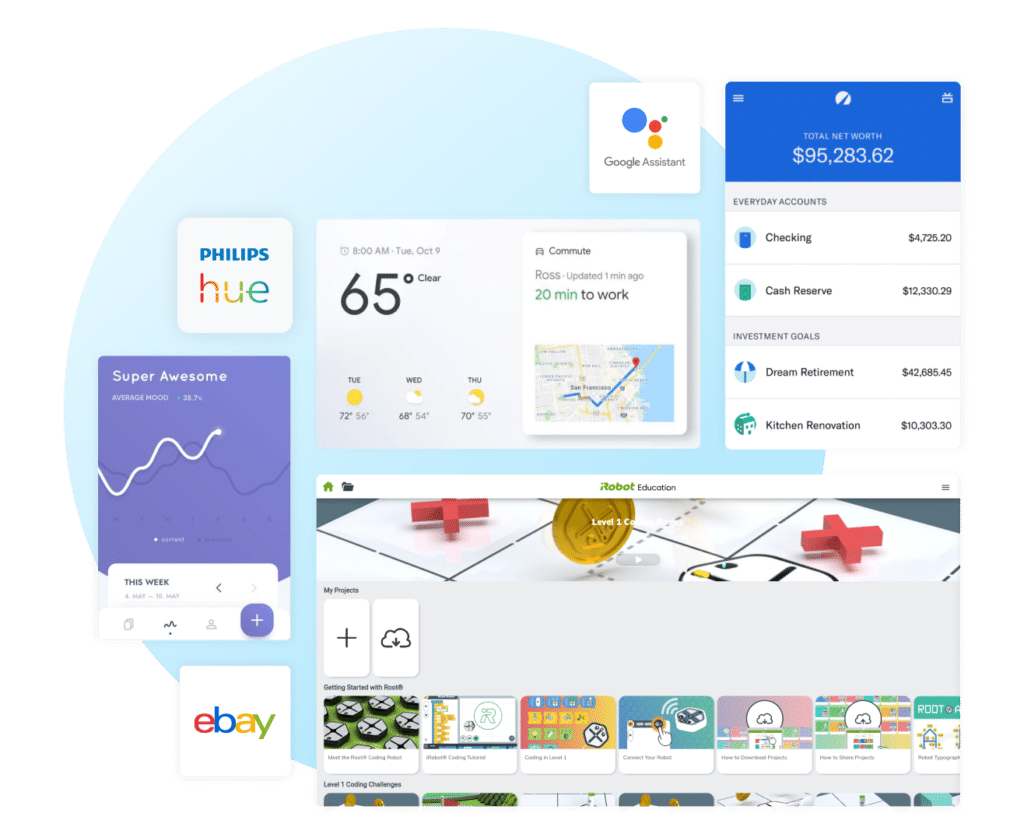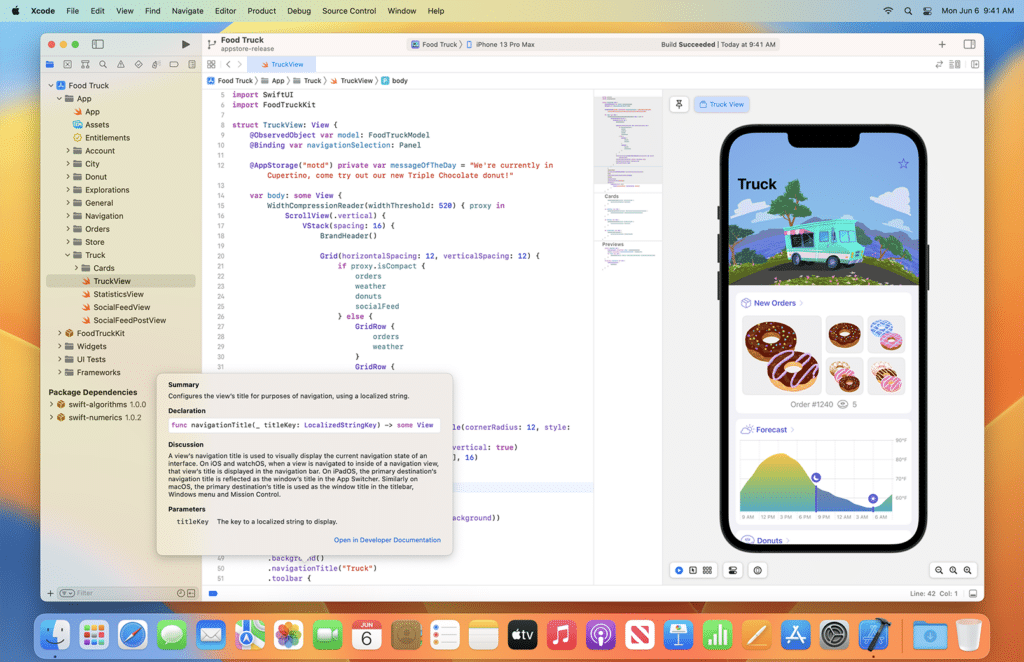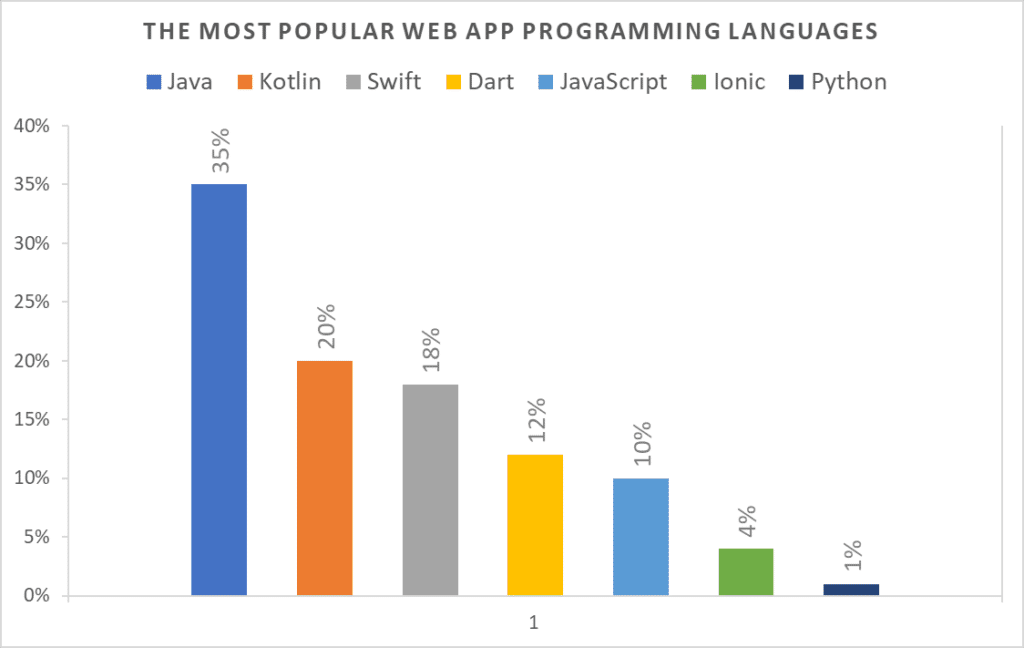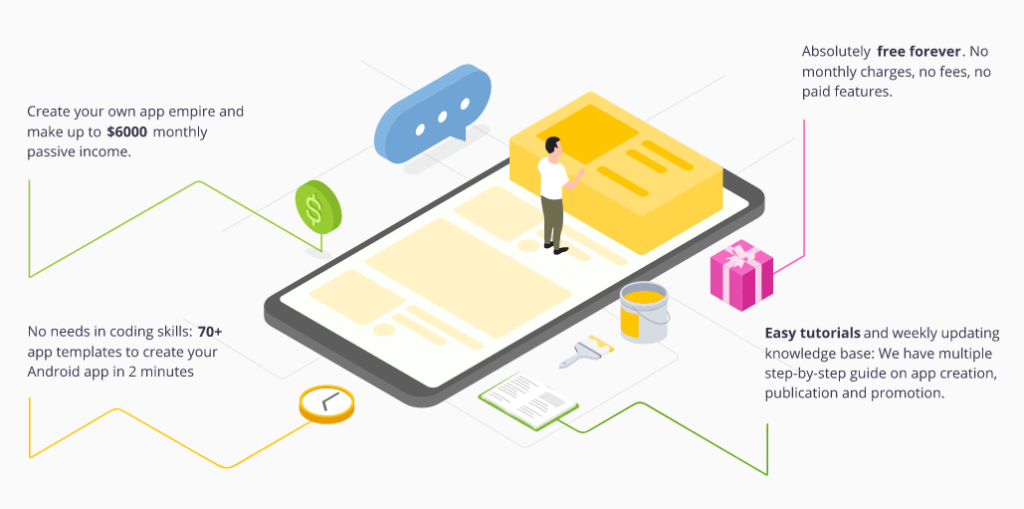How to Create an App with Coding?
In today’s world, mobile apps are an essential part of our daily lives. From social networking to online shopping, everything is just a few taps away at your fingertips.
If you have an idea for an app that you believe can make a difference, then learning how to make an app with coding can be an exciting and rewarding experience.
In this article, we will tell you about the basics of app development and the tools and programming languages you may need to know. So, if you are ready to turn your app idea into life, read on to learn the steps to create your product.
Top Ways How to Code an App
Are you considering creating an app on your own? Previously, your only options were building an Android or an iOS app. However, nowadays there are numerous options available.
Despite each method having its own strong and weak points depending on your project requirements, budget, timeline, and target audience, you can choose the best one according to your needs. Here are the top five methods to build an app from scratch.
Native
This method involves writing native code for each device, such as Java or Kotlin for Android, and Swift for iOS. The pros of this method are that it can give you the best performance, user experience, and access to OS native features. At the same time, it requires more time, effort, resources, and skills to develop and maintain two separate codebases.

WebView
This method involves building hybrid apps that are essentially web pages rendered within an app container. This has limitations in user experience and performance. The Ionic framework is the most popular example.
The strong points of this method are the ability to reuse web code and reduce development time and cost. However, it is limited in user experience, performance, and native functionality. It also relies on a JavaScript bridge that can cause delays and errors. Understanding the complexities and intricacies of this method begins at the very foundation of its creation: coding. If you’ve ever asked yourself, what is coding? – you’re not alone. Coding is the backbone of all the software we use daily, including the hybrid apps built through frameworks like Ionic. It’s a process of developing and instructing a computer to perform specific tasks by writing in a language that a machine can understand.
React Native
This method involves writing JavaScript code with React syntax that uses native widgets. It does not use HTML or WebView, but it still relies on a JavaScript bridge to interact with native services.
The pros of this method are that it can reuse code across platforms and use native widgets for a better user interface. It also has a large and active community and many third-party libraries. The cons are that it still depends on a JavaScript bridge that can affect performance and compatibility. It also may require native code for some features or platforms.

Flutter
This method involves writing code with Flutter, a framework that compiles native code for multiple platforms. It offers superior start-up times and app performance. It also supports a reactive development style, as well as a hot reload and hot restart feature. Despite that, the method is relatively new and less mature than other frameworks. It also has a smaller community and fewer libraries than React Native.

Progressive Web Apps
This method involves building web apps that can work offline and interact with devices using web APIs. It also does not require installation or app store approval. You just add a shortcut to your home screen or work directly in the browser.
Unfortunately, it is not fully supported by all browsers and devices. It also has limited access to native features and may have lower user engagement than native apps.
| Method | Pros | Cons |
| Native | Best performance, user experience, and access to OS native features | Requires more time, effort, resources, and skills to develop and maintain two separate codebases |
| WebView | Ability to reuse web code and reduce development time and cost | Limited user experience, performance, and native functionality. Relies on a JavaScript bridge that can cause delays and errors |
| React Native | Reuse code across platforms, use native widgets for better user interface, large and active community, and many third-party libraries | Depends on a JavaScript bridge that can affect performance and compatibility. May require native code for some features or platforms |
| Flutter | Superior start-up times and app performance supports a reactive development style, hot reload, and hot restart feature | Relatively new and less mature than other frameworks, smaller community, and fewer libraries than React Native |
| Progressive Web Apps | Can work offline, interact with devices using web APIs, no installation or app store approval required | Not fully supported by all browsers and devices, limited access to native features, lower user engagement than native apps |
How to Code an App for Android
Android is the most popular mobile operating system in the world, powering billions of devices across various form factors. To start building your app, follow these steps:
Step 1: Install Android Studio
Android Studio is the official integrated development environment (IDE) for Android app development. It has a user-friendly interface that allows you to create and edit your app’s code, design your app’s user interface (UI), run your app on a simulator or a real device, and debug your app using various tools. Android Studio also supports Jetpack Compose, a framework that lets you build modern and beautiful UIs with less code.

Step 2: Create a new project
Once you installed Android Studio, you can create a new project by clicking on File > New > New Project. You will see a dialog box where you can choose the name of your app, the package name (a unique identifier for your app), the minimum SDK version (the lowest version of Android that your app supports), and the project location (where your files will be stored). Click Next to continue.
Step 3: Select a template
Next, you will see a list of templates that provide some basic layouts and functionality for your app. You can choose one that suits your needs or start with an empty activity if you want more control over your app design.
Step 4: Configure your activity
An activity is an app component that provides a user interface for one screen. You can configure some aspects of your activity such as the name (the class name that represents the activity in code), the layout name (the XML file that defines the user interface elements), and the launcher icon (the icon that appears on the home screen or app drawer). Click Finish to create your project.
Step 5: Explore your project structure
Your project will open in Android Studio, and you will see a window with several panels. On the left side, you will see the Project panel that shows the files and folders of your project. On the right side, you will see the Code Editor panel that allows you to write and edit code. On the bottom, you will see the Logcat panel that displays messages from your app and device.
Step 6: Run and test your app
To run and test your app on a device or emulator (a virtual device that simulates an actual device), you need to click on Run > Run app from the menu bar or press Shift + F10 on Windows/Linux or Control + R on Mac OS X. You will see a dialog box where you can select a device or emulator from a list of connected devices or available emulators. If you don’t have any devices or emulators set up yet, you can click on Create New Virtual Device to create one using AVD Manager (Android Virtual Device Manager). Once you select a device or emulator, click OK to run your app.
How to Code an App for iPhone
To code an iOS app, you will need some tools and skills to get started. Here are some steps:
Step 1: Download Xcode
This is a powerful and versatile tool that allows you to create apps for all Apple platforms. It provides an integrated development environment (IDE) that includes a source editor, a graphical user interface (GUI) editor, a debugger, a simulator, and many other features that help you design, code, test, and debug your app effectively.
You can download it from the Mac App Store or the official website https://developer.apple.com/xcode/.

Step 2: Create an Xcode project for your app
You can choose from various templates that provide essential project configuration and files for different types of apps. You also need to provide some information about your app and your organization, such as the product name, the organization identifier, and the organization name. They are used to create the bundle identifier that identifies your app throughout the system.
Step 3: Design your app’s user interface with SwiftUI or UIKit
SwiftUI is a modern framework that lets you create declarative and reactive UIs with less code and more interactivity. UIKit is a traditional framework that lets you create imperative and event-driven UIs with more control and customization. You can use either framework or combine them in your project depending on your needs and preferences.
Step 4: Write your app’s logic using Swift
Swift is a fast, safe, expressive, and easy-to-learn programming language that works seamlessly with both SwiftUI and UIKit. You can use Swift to define data models, implement business rules, handle user interactions, access system features, communicate with web services, and more.
Step 5: Test and debug your app using the emulator or a real device
You can run your app in the emulator to check its functionality and how it will look on different devices and screen sizes. In this case, you will not need physical hardware. You can also run your app on a real device connected to your Mac via USB or Wi-Fi to test its performance and behavior in real-world conditions.
Also, using breakpoints, pause your app execution at specific points and inspect its state using various tools such as variables view, debug area, memory graph debugger, etc. You can also use console logs to print messages from your code to the console output window to debug your app.
Step 6: Distribute your app using App Store Connect or TestFlight
App Store Connect is a web-based platform that lets you manage your apps on the App Store by providing information such as metadata, screenshots, ratings, etc., as well as submitting builds for review by Apple before they are released to users. It is the only place to get an application for your Apple device.
TestFlight is a service that lets you distribute beta versions of your app to testers who can provide feedback before you launch it publicly.
Coding to Create an App—the Best Programming Language
After gaining a basic understanding of the available choices for app development, let’s take a closer look at which programming language would be best for mobile app development in 2023.

1. Java
Java is one of the most popular and versatile programming languages in the world. It is the official language for Android apps, which is the dominant mobile operating system with over 70% market share. Java is an object-oriented language that supports multiple paradigms, such as inheritance, polymorphism, abstraction, and encapsulation.
Java also has a rich set of libraries and frameworks that provide various functionalities and features, such as user interface, networking, database, graphics, multimedia, and security. Java is a compiled language that runs on a virtual machine (JVM), which makes it portable and compatible across different devices and platforms.
2. Swift
Swift is a modern and expressive programming language. It was created by Apple for developing iOS and macOS apps. The language is fast, safe, and interactive, with features like type inference, generics, closures, and protocols. It also supports multiple paradigms, such as object-oriented, functional, and protocol-oriented programming.
Swift is a compiled language that uses the LLVM compiler to generate optimized native code for Apple devices. It also has a powerful and intuitive Xcode IDE. The tool provides various instruments and features, such as code completion, debugging, testing, and deployment.
3. Kotlin
Kotlin is a modern and concise programming language that was developed by JetBrains to create Android apps. Kotlin is fully interoperable with Java, which means that you can use existing Java libraries and frameworks in your Kotlin code.
Kotlin also has many features that make it more expressive and concise than Java, such as null safety, data classes, extension functions, coroutines, and delegated properties. Kotlin is a compiled language that runs on the JVM or can be compiled into native code for iOS devices using Kotlin/Native.
Kotlin also has a powerful, feature-rich, and user-friendly IDE called Android Studio. Kotlin is becoming more popular than Java and tends to replace it shortly.

4. Dart
Developed by Google in 2011, Dart is an object-oriented, general-purpose programming language used for both client-side and server-side web development and native and cross-platform mobile development. Flutter, which makes developing cross-platform apps easily, uses Dart. Although Dart has a helpful community, it might require writing many subs and generic domain packages to support the core domain.
5. JavaScript
JavaScript is the top language for web development, thanks to its popular frameworks such as Angular, React.js, and Vue. It’s also used for client-side validation and can be used to develop front-end GUI, back-end servers, and mobile apps.
React Native is a popular JavaScript framework that allows cross-platform development for both Android and iOS mobile apps. It uses the same UI components as native iOS and Android apps but renders them using JavaScript code.
6. Ionic
Ionic is another cross-platform framework that uses web technologies such as HTML5, CSS3, and JavaScript (or TypeScript) to create hybrid mobile apps. Hybrid apps are web apps that run inside a native container on mobile devices.
Ionic allows you to use web components to create UIs for iOS, Android, and Progressive Web Apps. It has many benefits including a rich UI components library and integration with popular frameworks such as Angular, Vue, and React.
7. Python
Python is not a native or hybrid language for coding for app development, but it can be used to create PWA or the backend part. Python is an easy-to-learn, powerful, and versatile language that can handle various tasks such as data analysis, machine learning, web development, etc. For businesses looking to leverage Python’s versatility, investing in Python software development can streamline app creation, improve scalability, and enhance backend performance for seamless user experiences. Python has many advantages such as simple syntax, high readability, multiple paradigms, a large standard library, etc.
How to Develop Apps in Apssgeyser Without Code
If you’re looking to build your app but lack the time or resources to learn how to code, a no-code development may be a great solution. One way to develop apps without coding is AppsGeyser, a free app maker that allows converting any web content into an Android app in 2 easy steps.

Here are some of the benefits of using the AppsGeyser platform:
- It is free and simple to use, with no coding or design skills required.
- Over 30 app templates for different purposes, such as games, video, education, social media, etc.
- App monetization by showing banner ads or adding in-app purchases.
- App tutorials and guides to help app makers with app creation, distribution, and monetization.
- A live support team that can answer any questions or requests from app makers.
To create an app with AppsGeyser without coding, follow these steps:
- Go to https://www.appsgeyser.com/ and click on Create App button.
- Choose a mobile app template from over 30 available on the AppsGeyser website.
- Fill the forms with content that you want to display in your app.
- Customize your app design by changing colors, fonts, icons, and images. You can also add features like push notifications, social media integration, and monetization.
- Choose your app icon with AppsGeyser icon maker or upload your image.
- Add your app name and description to be displayed on Google Play Store or other platforms.
- Generate your app.
- Test your app on your device or emulator before publishing it.
- To publish your app on Google Play or other app stores, you will need an AppsGeyser account.
Frequently Asked Questions
Which platform should I choose to develop my mobile app—Android, iOS, or both?
Android and iOS are the two most popular platforms, and it depends on your target audience and budget. If you want to reach a wider audience, go for both. If you have a limited budget, choose the platform that your target audience prefers. You can also develop for both using cross-platform frameworks like React Native or Flutter.
How long does it take to develop a mobile app?
The time to develop a mobile app can vary depending on the complexity and features of the app. On average, it can take anywhere from 3 to 9 months.
What programming languages and frameworks are used in mobile app development?
Common programming languages and frameworks used include Java, Kotlin, Swift, Objective-C, React Native, and Flutter.
How much is mobile app development?
Creating an app can be free, or it can cost hundreds of thousands of dollars. It entirely depends on what features you want. You can create a basic app using open-source app-making tools for no cost at all. Alternatively, it can cost anywhere from $10,000 to $100,000.
How can I market and promote my mobile app?
You can market and promote your mobile app through app store optimization, social media, influencer marketing, and paid advertising.
How can I monetize my mobile app and measure its success?
You can monetize your app through in-app advertising, in-app purchases, subscriptions, or by offering a paid version of your app. The tools like Google Analytics, Firebase Analytics, and Flurry Analytics will help you measure your app’s success in terms of downloads, revenue, retention, engagement, and user feedback.
Can I build an app for free?
Yes, you can build an app for free using open-source app creation tools. If you want to learn how to code an app for free, you can start with tools like AppsGeyser, Flutter from Google, and Xamarin from Microsoft.
What is an app builder?
App Builder is an easy-to-use platform for making mobile apps without technical skills. You can develop apps online without coding just by using pre-made app templates.
How to build a mobile app without coding?
With AppsGeyser App Builder, you can produce mobile apps for free. To build a mobile app without coding, open one of the free app templates, upload the content and name your app. It’s that easy. There are no charges for making, downloading, and sharing apps.
Final Thoughts
Creating an app is a time-consuming process that cannot be accomplished overnight. Nevertheless, developing an app is a lucrative business opportunity that can be beneficial to both established firms and startups.
While learning how to create an app with coding is a valuable skill, it requires a significant amount of time. If your objective is to launch an app for genuine users and business reasons, using an app builder is a preferable alternative. This approach not only accelerates the development process but also saves money.
